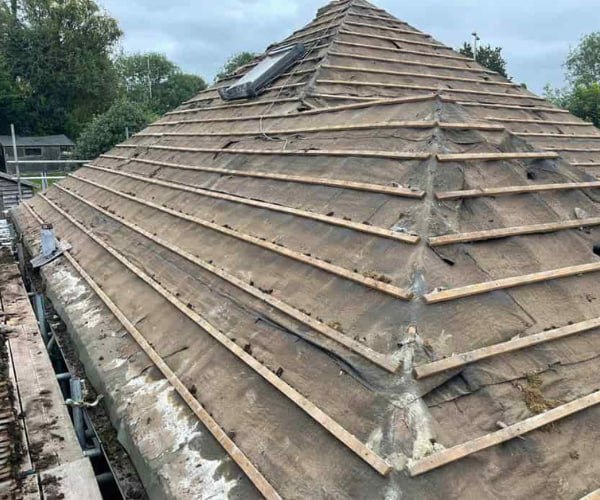Mastering the Pitch: Exploring Roof Pitch and Slope in Hipped Roof Re-Roofing with ATC Roofing Bromham
Introduction: Understanding roof pitch and slope is essential for functional and aesthetic success when it comes to hipped roof re-roofing projects. At ATC Roofing Bromham, we specialise in roofing solutions that prioritise craftsmanship and attention to detail. In this blog post, we’ll dive into the intricacies of roof pitch and slope in hipped roofs, exploring their significance and implications for re-roofing projects.
Understanding Roof Pitch and Slope
Roof pitch and slope refer to the incline or steepness of a roof surface, measured in degrees or as a ratio of vertical rise to horizontal run. In hipped roofs, which feature sloping sides and four distinct planes meeting at a ridge, understanding the pitch and slope of each plane is crucial for proper water drainage, structural integrity, and aesthetic harmony.
Significance of Roof Pitch and Slope in Hipped Roofs
- Water Drainage: Adequate roof pitch and slope ensure efficient water runoff, preventing water accumulation and potential leaks. In hipped roofs, proper slope gradients on each plane facilitate smooth water drainage towards gutters and downspouts, protecting the roof and underlying structure from water damage.
- Structural Stability: Roof pitch and slope are critical in distributing weight and managing structural loads. Optimal pitch angles help mitigate the effects of snow accumulation and wind uplift, reducing the risk of roof failure and structural damage during extreme weather events.
- Aesthetic Appeal: Roof pitch and slope contribute to the overall aesthetic of a hipped roof, influencing its proportions, silhouette, and visual impact. Carefully chosen pitch angles can enhance architectural character and complement the style of the home, creating a harmonious and visually pleasing exterior.
Factors Influencing Roof Pitch and Slope
- Local Climate: Roof pitch and slope should be tailored to the region’s specific climate and weather conditions. Areas with heavy rainfall or snowfall may require steeper pitches to facilitate water drainage and prevent roof damage.
- Architectural Style: The home’s architectural style often dictates the appropriate roof pitch and slope. Traditional styles may feature shallower pitches, while modern designs may incorporate steeper angles for a sleeker aesthetic.
- Material Compatibility: Different roofing materials have specific roof pitch and slope requirements to ensure proper installation and performance. Consultation with roofing professionals like ATC Roofing Bromham can help determine the best pitch for your chosen roofing material.
Re-Roofing Considerations
During hipped roof re-roofing projects, careful consideration of roof pitch and slope is essential to maintain structural integrity and preserve the integrity of the original design. Factors to consider include:
- Assessing existing pitch angles and slope gradients
- Addressing any deficiencies in water drainage or structural stability
- Selecting roofing materials and techniques that complement the hipped roof design
- Consulting with roofing experts to develop a tailored re-roofing plan
Conclusion: Roof pitch and slope are fundamental elements of hipped roof design, influencing everything from water drainage to architectural aesthetics. With experience and commitment to excellence, we ensure that every re-roofing project achieves optimal performance, durability, and visual appeal.
Call us on: 01234 982 391
Click here to find out more about ATC Roofing Bromham
Click here to complete our contact form and see how we can help with your roofing needs.

